Herniated disc test at home
Herniated disc test at home
The Straight Leg Raise (SLR) test is often used as a physical examination technique to assess lumbar disc bulges or herniations. It helps to determine if nerve impingement or irritation is present, particularly involving the sciatic nerve.
Lumbar radicular pain, also known as sciatica, refers to pain that radiates along the path of the sciatic nerve, which extends from the lower back down through the buttocks and into the leg. It is often caused by compression or irritation of the nerve roots in the lumbar spine. Here are some common signs and symptoms associated with lumbar radicular pain:
- Lower Back Pain: Lumbar radicular pain typically originates in the lower back or buttock region. It may be described as a dull, achy pain or a sharp, shooting pain.
- Radiating Leg Pain: The hallmark symptom of lumbar radicular pain is pain that radiates down the back of the leg. The pain can travel through the buttock, thigh, calf, and even reach the foot or toes. It is often described as a burning, tingling, or electric shock-like sensation.
- Numbness and Tingling: Along with pain, individuals with lumbar radicular pain may experience numbness or tingling sensations in the affected leg or foot. This numbness and tingling can be felt in specific areas or can affect a larger portion of the leg.
- Muscle Weakness: In more severe cases, lumbar radicular pain can lead to muscle weakness in the leg or foot. This can result in difficulty walking, decreased coordination, or an unstable feeling while standing.
- Worsening Symptoms: Certain movements or positions, such as bending forward, coughing, sneezing, or prolonged sitting, may exacerbate the pain and other symptoms associated with lumbar radicular pain. These activities can increase pressure on the affected nerve roots, leading to increased discomfort.
It's important to note that the severity and presentation of lumbar radicular pain can vary from person to person. It is always recommended to consult with a healthcare professional, such as a physical therapist for an accurate diagnosis and appropriate treatment plan. They can perform a thorough evaluation, which may include a physical examination and imaging studies, to determine the underlying cause of the radicular pain and develop an individualized management approach.
Here is couple of links that could helps
L4 L5 - L5 S1 best seated exercises
https://youtu.be/2f4fM8KP7FY
Sciatica pain relief in 5min
https://youtu.be/nEMxW8Z_CI4
4 mistakes you must avoid with chronic lower back pain,
https://youtu.be/LG_KCkKbe5g
sciatica nerve pain relief immediate effect
https://youtu.be/2ZOqtAm8LTw
Annular Tear L4L5 L5S1 Disc Bulges
https://youtu.be/qbnFdG_ZULY
Spinal stenosis cause, symptoms and rehabilitation routine
https://youtu.be/6BWJYA6eYwE
Ankylosing Spondylitis core exercises
https://youtu.be/Pf-cb5Akurs
𝐂𝐨𝐧𝐧𝐞𝐜𝐭 𝐰𝐢𝐭𝐡 𝐁𝐨𝐛 𝐚𝐭 𝐃𝐮𝐛𝐥𝐢𝐧 𝐒𝐩𝐨𝐫𝐭𝐬 𝐈𝐧𝐣𝐮𝐫𝐲 𝐂𝐥𝐢𝐧𝐢𝐜
-----------------------------------------------------------------------------
𝗕𝗼𝗼𝗸 𝘆𝗼𝘂𝗿 𝗼𝗻𝗹𝗶𝗻𝗲 𝗰𝗼𝗻𝘀𝘂𝗹𝘁𝗮𝘁𝗶𝗼𝗻 𝘄𝗶𝘁𝗵 𝘁𝗵𝗲 𝗹𝗶𝗻𝗸 𝗯𝗲𝗹𝗼𝘄:⭐⭐
https://dublinsportsinjuryclinic.com/book-appointment/
𝙛𝙤𝙡𝙡𝙤𝙬 𝙢𝙚 𝙤𝙣 𝙢𝙮 𝙨𝙤𝙘𝙞𝙖𝙡 𝙢𝙚𝙙𝙞𝙖 ⭐⭐
𝐈𝐍𝐒𝐓𝐀𝐆𝐑𝐀𝐌 → https://www.instagram.com/dublin_spor...
𝐅𝐀𝐂𝐄𝐁𝐎𝐎𝐊 → https://www.facebook.com/dublinphysic...
𝐖𝐄𝐁𝐒𝐈𝐓𝐄→ https://www.dublinsportsinjuryclinic.com
#l4l5 #L5S1 #discbulges #spinalstenosis #l4l5 #discbulges #sciaticatretament #sciaticapainrelief #sciatica #bamboospine
#spinalstenosis #spinalstenositreatment #spinallumbarstenosis #AnkylosingSpondylitis
-
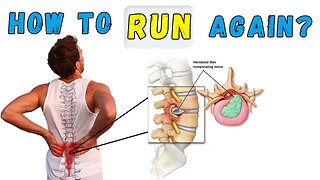 15:12
15:12
Bob The Physio
11 months agoHow to do cardio with herniated disc
31 -
 29:49
29:49
Bob The Physio
9 months ago $0.01 earnedHow to recover from lumbar l4 l5 / l5 S1 disc bulges at home
63 -
 5:30
5:30
BobandBrad
1 year agoWhy Herniated Disc Exercises Don't Work. Must Know This!
184 -
 8:01
8:01
BobandBrad
1 year agoHerniated Disc Pain Relief Tips
51 -
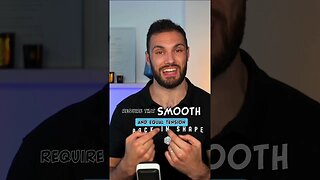 0:37
0:37
BackInShapeProgram
10 months agoHerniated Disc Compromises Your Back Health
-
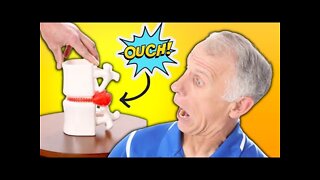 7:54
7:54
BobandBrad
1 year agoHerniated Disc Symptoms, (All You Need To Know To Cure)
822 -
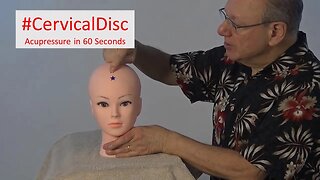 1:07
1:07
drbaritz
1 year agoHeal Your Cervical Disc Naturally
9 -
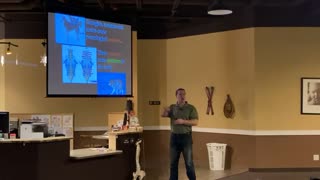 24:53
24:53
FamilyFirstChiroMN
5 months agoThe Herniated Disc
2 -
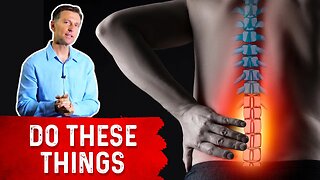 7:21
7:21
Dr. Eric Berg
2 years agoFixing Lumbar Disc Pain
36 -
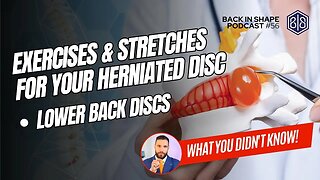 40:47
40:47
BackInShapeProgram
10 months agoLow Back Pain Relief: The Best And Worst Exercises for Herniated Discs
46